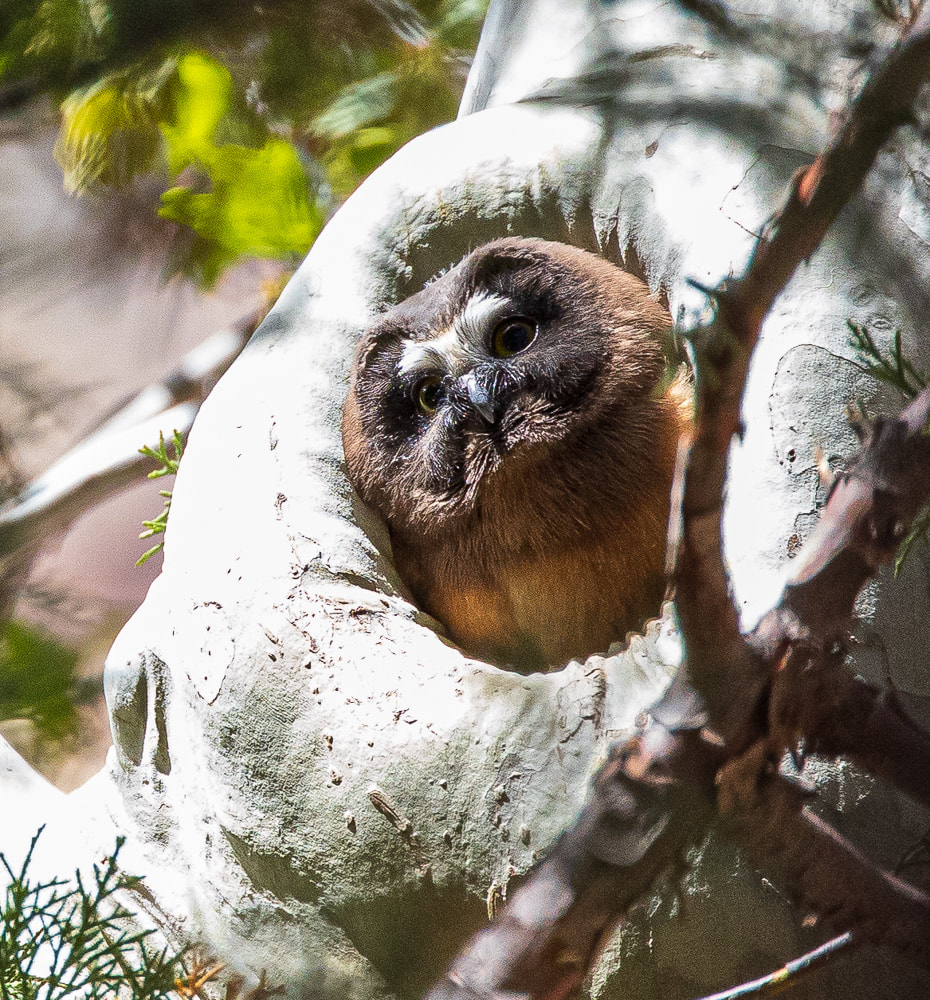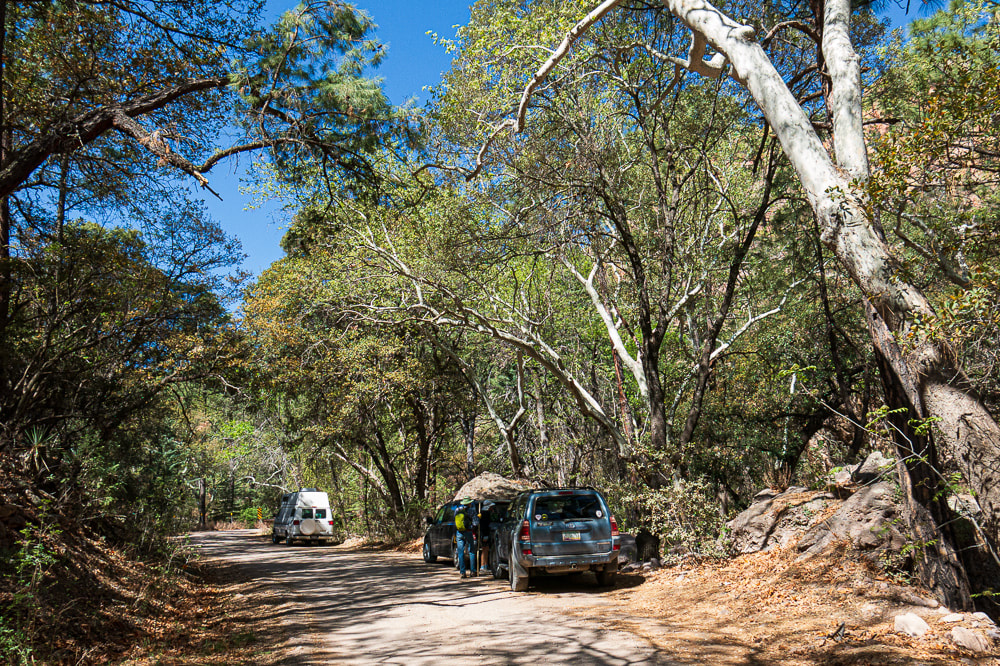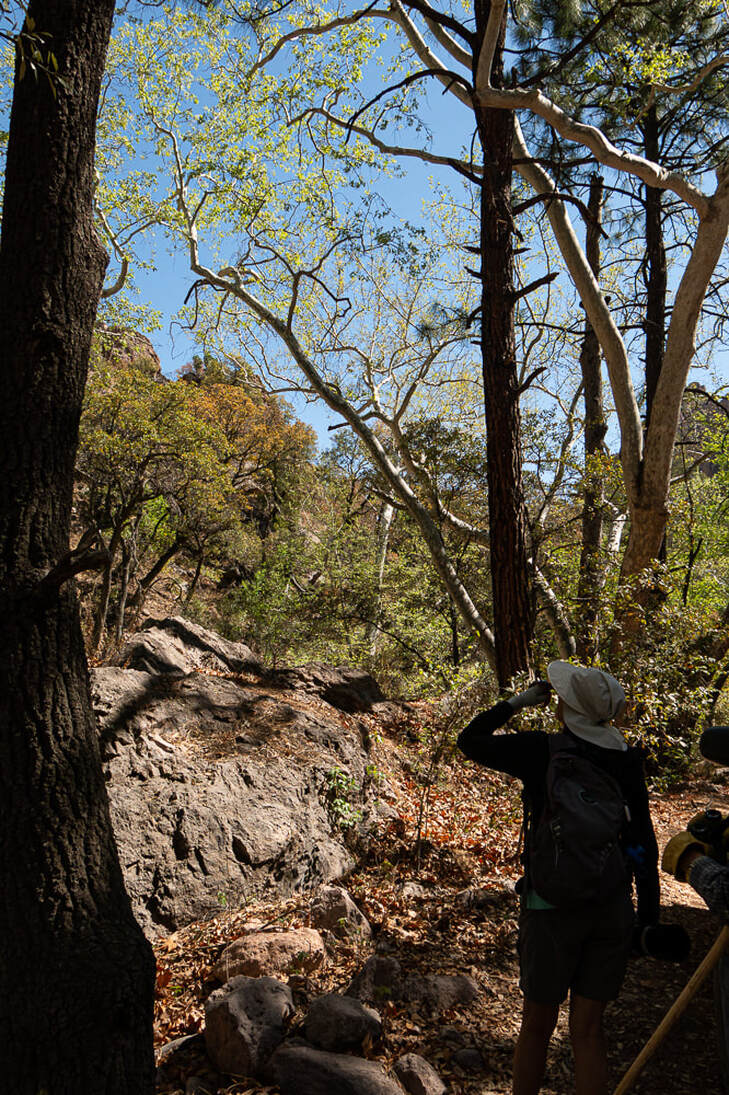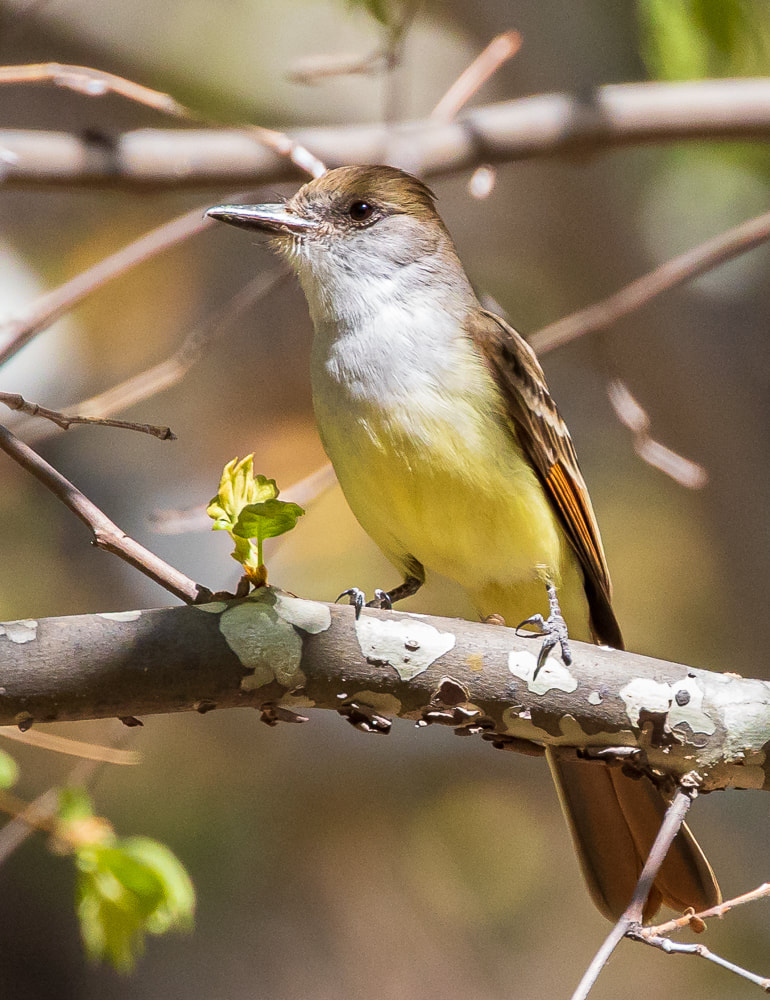|
Juvenile Northern Saw-whet Owl, South Fork of Cave Creek, April 23, 2021. From April 22nd to the 26th, we headed back with some good friends to Cave Creek Ranch in Portal, Arizona, to expand birding beyond our local haunts now that the pandemic is showing signs of control in the U.S. and now that we are vaccinated. Yahoo! For more on Portal and Cave Creek Canyon going back to our first visit in 2016, see this link to my prior posts. These posts include maps of the area, details about Cave Creek Ranch, as well as images of 39 species, including the Elegant Trogan and the Whiskered Screech-Owl. This first post covers our first few days in the South Fork of Cave Creek, a fantastic birding area. Our first stop was at sunset on the 22nd, just beyond the berm on the south Fork, where a pair of Northern Saw-whet Owls had produced several fledglings. Northern Saw-whet Owl The Northern Saw-whet Owl is a small owl common to the forests of North America and the west, only rarely seen as far south as Cave Creek Canyon. This past spring a pair nested in a large Sycamore near the berm at the end of the South Fork Road, high in a cavity. Late in the afternoon of April 22nd we were fortunate to see a fledgling sitting on a branch, not far from the nest. Juveniles have a cinnamon belly, unspotted brown back, and a white "V" between the eyes. Adults are small, robin-sized, mottled brown with a whitish facial disk and a rounded oversized white-spotted head. We saw only juvenile fledglings on this trip., so for images of the adult from the Cornell website, see this link. The images above and below were shot in early evening as the sun was sinking below the Chiricahuas to the west. This fledging left his* nest to perch on a branch and take in his new world. Other birders reported two or three nestlings total, a good sized clutch for this species. *It is not clear whether this is a male or female. The following morning, we caught the same bird or his/her sibling sitting at the nest entrance, taking in his new world, see images below. To my eye this bird looks different from our subject of the prior evening; perhaps a bit younger with white flecks at the edges of the facial disk, that might be residual feather sheaths. They are cavity nesters, in this case a large hole in a Sycamore close to the berm. Northern Saw-whet Owls breed in forests across southern Canada and the northern and western United States, extending south to central Mexico. They live year round in northern Arizona, but are uncommon in the Chiricahuas. They are cavity nesters in a wild range of habitats, but seem to prefer mature forests with an open understory for foraging, deciduous trees for nesting (in this case a Sycamore), dense conifers for roosting, and riverside habitat nearby. They eat small mammals, especially mice and voles, as well as insects, and will feed on other birds during migration. Their flexibility when it comes to food probably helps explain their wide range. Our subject here is taking in his late morning world, perhaps including the photographer, who was well below the nest and in the understory. It was a challenge to find a clear visual path to the nest opening. In spite of our drought, there must have been enough food to feed the parents and the nestlings. Owls will sometimes abandon nests if they cannot find enough food for themselves and offspring. A bit about the South Fork . . . .The south Fork Road facing toward 42 Forest Road and Portal, with the creek to the left of the photo. A great riparian area for birds, with lots of bugs and understory, as well are large trees for cavity nesters. If you are driving west out of Portal, the road bears left and becomes 42 Forest Road, heading to the visitor information center, Sunny Flat and the Southwestern Research Station. If you go to the right at this point, the road heads up to the town of Paradise, and eventually over to the western side of the mountain range, and back toward Tucson. Off of the 42 Forest Road, before you get to Sunny Flat, you will find the South Fork Road on the left which heads southwest along the South Fork of Cave Creek. The road ends at a berm, where the dirt road has been turned into a trail. The whole area around the road and the creek is prime birding territory. South Fork Road facing southwest in the direction of the berm and trailhead. This is a great place to pull over and look for birds. Just before the road ends at the berm, it crosses the creek at this bridge, which is where the two birds below were spotted! Brown-crested FlycatcherThe Brown-crested Flycatcher lives in riparian woodlands of North, Central and South America, breeding as far north as Arizona, New Mexico, and portions of Texas, and wintering in southern Mexico, with large populations in Central and South America. They are cavity nesters, favoring large trees and cacti. They tend to be shy, favoring the upper canopy, except on breeding grounds, which likely brought this bird within the reach of my lens. (Reference: Birds of the World). Arizona WoodpeckerLet's finish with my best shot of this Arizona Woodpecker, also captured from the bridge over the creek. The Arizona Woodpecker is a year round resident of the mountains of Mexico, with their northern range extending just into SE Arizona, making Cave Creek a great place to spot them. They forage for insects from tree bark, in a fashion similar to the Brown Creeper, starting at the bottom and working their way up. They also eat berries and Acorns, a dietary flexibility that likely allows them to winter in areas that strict insectivores would avoid. For more images of the Arizona Woodpecker from prior posts, click this link. That's all for now. More from Cave Creek soon!
Happy trails!
0 Comments
Leave a Reply. |
AuthorHenry Johnson, photographer and author of this site. For more detail, see About
Categories
All
Archives
July 2024
|
















 RSS Feed
RSS Feed